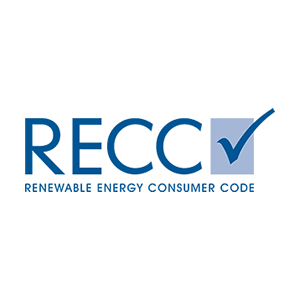At Blue Electrics, we take pride in carefully designing solar PV systems that maximise efficiency while ensuring the safety and longevity of your investment. When designing a solar panel system, it’s important to understand how voltage, current (amps), and Maximum Power Point Trackers (MPPTs) influence the system. This blog will walk you through the key factors we consider when designing your solar array, particularly when determining how many solar panels we can connect in a single “string.”
The Basics: What is a String of Panels?
Solar panels in a PV system are typically connected in a “series” to form a string. In this type of connection, the positive terminal of one panel connects to the negative terminal of the next, and so on. This setup causes the voltage of each panel to add together, while the current (amps) remains the same as that of a single panel.
For instance, if you have five panels each producing 40 volts (open-circuit voltage), the total voltage of the string would be 200 volts. However, the current remains consistent with a single panel’s output, say 10 amps.
Open-Circuit Voltage (Voc) and Maximum Power Voltage (Vmp)
Every solar panel comes with two key voltage specifications: Voc (open-circuit voltage) and Vmp (voltage at maximum power point).
- Voc is the maximum voltage a solar panel can produce when it’s not connected to a load (i.e., when it’s open-circuit).
- Vmp is the voltage when the panel is operating and producing its maximum power.
Why is this important? The inverter we install in your system has a maximum input voltage it can handle. If the combined voltage of the panels in a string exceeds this limit, especially on cold days when voltages can increase, the system may shut down or even become damaged. At Blue Electrics, we design the system to ensure that the total voltage of your panels always stays within the safe range of your inverter.
Temperature Coefficients: The Impact of Weather
Temperature plays a big role in how solar panels operate. In cooler weather, the voltage from your panels can increase, which means the total voltage from the string can exceed the inverter’s limit if not accounted for. This is where the temperature coefficient of the panels comes in.
For example, a panel with an open-circuit voltage of 40 volts might have a temperature coefficient of -0.3%. This means for every degree below 25°C (standard test conditions), the voltage increases by 0.3%. On a cold winter morning, this increase could push the voltage higher than expected, which is why we at Blue Electrics factor in this voltage rise to prevent system overloads.
Short-Circuit Current (Isc) and Maximum Power Current (Imp)
Just as with voltage, each solar panel has a short-circuit current (Isc) and a maximum power current (Imp):
- Isc is the current that flows when the panel’s positive and negative terminals are directly connected (short-circuited).
- Imp is the current when the panel is operating at its maximum power output.
The current in a string remains the same as a single panel, but if we connect multiple strings in parallel, the current increases. Your inverter has a maximum input current it can handle, so we ensure that the current remains within this limit when designing the system.
Maximum Power Point Trackers (MPPTs)
The MPPT is an essential part of your inverter that optimises the energy output from the solar panels. An MPPT ensures that each string of panels operates at its most efficient point, adjusting for factors like shading, orientation, and temperature.
If your inverter has multiple MPPTs, we can connect strings with different orientations (e.g., east-facing and west-facing panels) to the same system, and the MPPT will ensure that each string performs at its best.
Practical Considerations: How Blue Electrics Determines String Size
To calculate how many panels we can safely connect in a string, we consider the following:
- The open-circuit voltage (Voc) of each panel.
- The maximum input voltage of your inverter.
- The temperature coefficient to account for any voltage increases in cold weather.
For example:
- Panel Voc: 40 volts
- Inverter max voltage: 600 volts
- Temperature coefficient: -0.3% per degree Celsius below 25°C
- Expected minimum temperature: 0°C (25 degrees below standard test conditions)
In cold conditions, the panel’s Voc would increase by 25 × 0.3% = 7.5%, bringing the panel’s voltage to about 43 volts.
With a 600-volt inverter, the maximum number of panels we can connect in a string is:
600 volts ÷ 43 volts ≈ 13 panels.
This ensures your system remains efficient and safe throughout the year, even during extreme temperatures.
Conclusion: Blue Electrics Ensures Optimal Solar Array Design
At Blue Electrics, we handle the technicalities of system design so you don’t have to worry about voltage limits, current handling, or system shutdowns. By taking into account the unique specifications of your panels, the environment, and your inverter, we create a solar PV system that will work safely and efficiently for years to come.
If you’re interested in a solar installation or want to expand an existing system, reach out to Blue Electrics. We’ll make sure your solar array is designed for maximum performance, tailored to your home’s specific needs.
Feel free to get in touch with us at Blue Electrics for any questions or to schedule a consultation. We’re here to help you make the most of your solar investment!




















